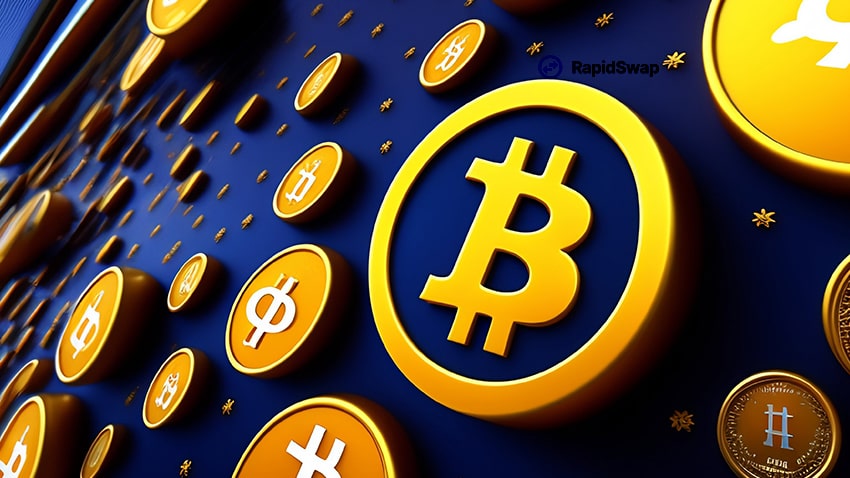When dealing with cryptocurrency exchanges, you might notice that different platforms require varying numbers of confirmations before accepting deposits. This often leads to the question: why are so many confirmations necessary? The answer lies in a combination of security measures and strategic considerations by exchanges. This article explores the reasons behind the requirement for multiple network confirmations, shedding light on the security protocols and potential motives of cryptocurrency exchanges.
Security Considerations: Protecting Against Blockchain Vulnerabilities
One of the primary reasons exchanges require multiple confirmations is to safeguard against certain vulnerabilities inherent in blockchain technology. These vulnerabilities include block splitting, double spending, and the notorious 51% attack. Understanding these issues is key to grasping why confirmations are so crucial.
Block Splitting and Transaction Safety
Block splitting occurs when two or more blocks are created simultaneously from a single block on the blockchain. This can lead to a temporary fork in the blockchain, where different versions of the blockchain exist until one chain becomes dominant. During this split, transactions included in the “orphaned” or discarded chain lose their confirmed status. Although these transactions often return to the queue to be included in a future block, there is a risk that they might be lost entirely.
By requiring multiple confirmations, exchanges mitigate the risk posed by block splitting. More confirmations ensure that the block containing a transaction is deeply embedded in the blockchain, reducing the chances that it could be reversed or lost due to block splitting.
Double Spending: Preventing Duplicate Transactions
Double spending is another significant concern in the cryptocurrency world. It refers to the possibility of spending the same cryptocurrency twice before the initial transaction is fully confirmed. When a transaction is initiated, the funds remain in the sender’s wallet until the transaction is verified and completed on the blockchain. During the time between initiating and completing the transaction, there’s a window where a user could attempt to send the same funds in a different transaction.
To protect against this, exchanges require a certain number of confirmations before considering a transaction final. This waiting period allows the network to verify the authenticity of the transaction, ensuring that the same funds aren’t being spent multiple times.
The 51% Attack: Safeguarding Network Integrity
The 51% attack is one of the most feared scenarios in blockchain technology. It occurs when a malicious actor gains control of more than 50% of the network’s hash power, allowing them to manipulate the blockchain. This includes the ability to reverse transactions, effectively enabling double spending on a large scale.
In response to past incidents, such as the 2018 attack on the Bitcoin Gold (BTG) network, exchanges have increased the number of required confirmations to deposit or withdraw funds. For instance, Bitcoin Gold developers recommended that exchanges require up to 50 block confirmations to ensure the security of transactions. This added layer of protection makes it significantly harder for attackers to manipulate the blockchain.
Strategic Considerations: Holding Funds and Exchange Practices
While security is the primary reason for requiring multiple confirmations, some exchanges may have additional motives. By requiring a higher number of confirmations, exchanges can retain users’ funds for longer periods, allowing them to utilize these funds strategically.
Withholding Funds for Strategic Advantage
Some exchanges may deliberately impose more confirmations to hold onto users’ funds for as long as possible. During this period, the exchange can use the retained funds for its own transactions, potentially generating profit. For example, if a large influx of a specific cryptocurrency is received, the exchange might sell that currency before crediting users’ accounts, taking advantage of any price fluctuations.
Impact on Arbitrage and Market Efficiency
Another reason exchanges might require multiple confirmations is to complicate the efforts of arbitrage traders—those who profit from price differences across different exchanges. By extending the confirmation time, exchanges can slow down the transfer of funds between platforms, making it harder for arbitrage traders to execute quick transactions. This delay can prevent traders from capitalizing on short-lived price differences, thereby maintaining a more stable market on the exchange.
The Balance Between Security and Strategy
In conclusion, the requirement for multiple network confirmations by cryptocurrency exchanges serves both to enhance security and, in some cases, to benefit the exchange’s operations. By understanding the risks of block splitting, double spending, and 51% attacks, it becomes clear why exchanges impose these measures. At the same time, recognizing the potential strategic reasons for holding funds helps users navigate the cryptocurrency landscape more effectively.
As a user, it’s important to be aware of these practices and consider them when choosing an exchange or planning your transactions. While the additional wait for confirmations might be inconvenient, it ultimately serves to protect your assets and the integrity of the blockchain network.

